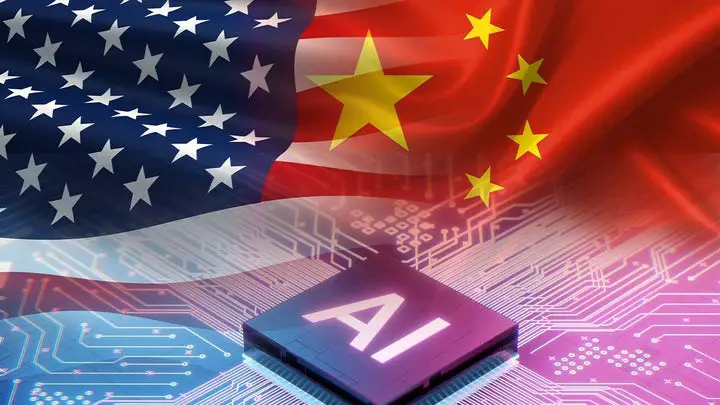Dashveenjit is a seasoned tech and business journalist dedicated to uncovering and reporting stories for both online and print media. With a background in parliamentary reporting, she also explores lifestyle and art topics, showcasing her diverse interests.
The ongoing rivalry between the United States and China in the field of Artificial General Intelligence (AGI) is poised for a significant policy shift. The U.S.-China Economic and Security Review Commission (USCC) has issued a series of recommendations to Congress, suggesting the initiation of a groundbreaking effort similar to the Manhattan Project. This initiative focuses on restricting humanoid robots and emphasizes the crucial role of AGI in the evolving landscape of international relations.
Key Highlights from the USCC Report
Released in November 2024, the Commission’s annual report outlines 32 recommendations that could substantially reshape the way the two superpowers engage with each other, positioning artificial intelligence at the forefront of a new strategic competition.
The Push for AGI Development
Central to the report is a bold proposal aimed at launching a government-backed program for developing AGI—intelligent systems that could rival or surpass human cognitive capabilities. This recommendation is part of a broader strategy that encompasses export controls, investment screenings, and novel trade policies designed to safeguard U.S. technological dominance.
The initiative intends to streamline the process for leading AI companies, cloud service providers, and data center operators to secure multi-year contracts. Furthermore, it would receive strong support from the Defense Department, categorized under the high-priority “DX Rating,” typically designated for critical national security projects.
This represents a significant level of government involvement in AI development, reflective of the urgency observed in previous technological races. It also raises essential considerations about the extent of state intervention in an arena predominantly driven by private-sector innovation.
Broader Technological Recommendations
The report’s recommendations extend beyond AGI development. Key suggestions include imposing restrictions on imports of advanced autonomous humanoid robots from China. These robots are characterized by their intricate dexterity, mobility, and intelligence capabilities.
Another focus of the report is on energy infrastructure products equipped with remote monitoring technologies, addressing heightened concerns about the vulnerabilities posed by connectivity in critical infrastructure systems. This proposal builds upon existing export restrictions in the semiconductor industry by advocating for tightened oversight of technology transfers and investment flows.
As China bolsters its domestic chip production capabilities in the face of global restrictions, the Commission pushes for the establishment of an Outbound Investment Office. This office would aim to block U.S. financial resources and expertise from enhancing China’s technological advancements in sensitive domains.
Transforming Trade and Investment Dynamics
One of the most impactful recommendations suggests terminating China’s Permanent Normal Trade Relations (PNTR) status. This bold move could fundamentally alter technology supply chains and trade flows that have long defined the global tech sector. While acknowledging the intertwined nature of the U.S. and Chinese tech ecosystems, this recommendation indicates that such interdependence might now be more detrimental than beneficial.
Another critical theme is data transparency, with proposals aimed at expanding reporting requirements for investments and technology transfers. The Commission emphasizes the importance of tracking investments channeled through offshore entities to address significant oversight blind spots.
This report arrives at a pivotal moment in technological evolution, where China’s ambition for self-sufficiency in essential technologies is evident, highlighted by its “new quality productive forces” initiative. Simultaneously, advancements in AI and quantum computing heighten the stakes in this technology rivalry.
Challenges Ahead
Nonetheless, the recommendations put forth by the Commission face practical obstacles. Achieving AGI is a considerable scientific challenge that might not yield rapid results, irrespective of funding influxes. Furthermore, limitations on technology transfers and investments could yield unintended ramifications for global innovation ecosystems, which have traditionally benefitted both the U.S. and China.
If these recommendations take effect, the tech industry will need to navigate a more intricate regulatory environment. Companies can anticipate new compliance requirements related to international investments, technology transfers, and collaborative research initiatives.
Navigating Future Implications
The effectiveness of these proposals largely hinges on collaborative efforts with allied countries that share similar technological aspirations and concerns. The report acknowledges this necessity by advocating for multilateral strategies concerning export controls and investment regulations.
As the U.S.-China tech competition enters a new phase, government policy may increasingly influence technological development. The ramifications of this direct intervention, whether it accelerates or stifles innovation, remain uncertain. Nevertheless, the tech industry should brace itself for heightened scrutiny and regulation regarding international technological collaboration.
This ongoing evolution underscores the fundamental role of AI in shaping the future of technology. For an in-depth exploration of how artificial intelligence impacts various sectors, consider reading our past articles, such as how AI is transforming travel connectivity or Microsoft and OpenAI’s profit-driven AGI vision.
Ultimately, staying ahead in this dynamic landscape requires continuous adaptation and insight into emerging trends and regulatory changes. As technology continues to evolve rapidly, understanding these shifts will be essential for industry players aiming to thrive in a competitive environment.
